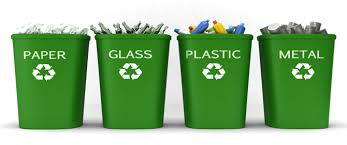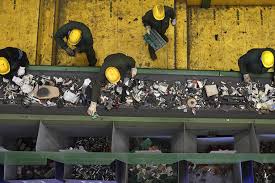ALTERNATIVE SOURCES OF ENERGY

ACCORDING TO OXFORD DICTIONARIES ALTERNATIVE ENERGY IS DESCRIBED AS
Energy fuelled in ways that do not use up the earth’s natural resources or otherwise harm theenvironment, especially by avoiding the use of fossil fuels or nuclear power.


THE FOLLOWING PROJECT WAS CARRIED OUT BY KATERINA TSIOLI AND MARIA TAMPAKIAN PRO







ACCORDING TO OXFORD DICTIONARIES ALTERNATIVE ENERGY IS DESCRIBED AS
Energy fuelled in ways that do not use up the earth’s natural resources or otherwise harm theenvironment, especially by avoiding the use of fossil fuels or nuclear power.
SOLAR ENERGY
As solar energy becomes increasingly accepted as many people start to take note of the rapidly increasing global warming problems, it is important to weigh both the advantages and disadvantages of this renewable energy source. The main aspect of solar energy that differentiates it from other sources of energy is that it is free.

HOW IT WORKS
THE FOLLOWING PROJECT WAS CARRIED OUT BY KATERINA TSIOLI AND MARIA TAMPAKIAN PRO
RECYCLING
What is the recycling loop?
Have you ever seen this symbol before? This is the recycling loop. There are other forms of this symbol but this is the most common form.
The three arrows in this symbol stand for the three steps in therecycling process. The first of these steps is the collection of the recyclable materials through curbside or other kinds of collection facilities. The second step is taking the old material and making it into new products. The third step happenswhen you buy products made from materials taken from products that you would have thrown away.
Why should we recycle?
Recycling or making new things from recycled ones takes a lot less money, much less energy, and saves a lot of the Earth’s natural resources, thereby helping the environment.
Recycling also saves space in landfills. Instead of your garbage being thrown away and taking up space and possibly damaging the environment it’s better to recycle it.
The energy saved by recycling also results in less pollution and we all know how bad pollution is to our environment. When you make new products from old but still useful materials think about the natural resources that are saved because of the material from old products that would otherwise have been thrown away.
WHAT CAN WE DO?
What Else Can We Do With Waste? Some countries already reuse, recycle, compost or
recover energy from almost 40 percent (by weight) of
its residential and commercial waste each year. This
reduces the need for landfi ll space, saves the cost of
disposal and reuses valuable natural resources. The
overall goal is to reduce
the volume of discarded items.
The following list includes options for managing solid
waste, and is in order from most to least desirable:
Reduce the quantity of waste produced. For example,
some products and packaging are designed to use less
material, to be recyclable or to contain fewer hazardous
chemicals. We can produce less waste through
selective shopping. Also, we can encourage reduction
by expressing our views about products and packaging
to retailers, industry and government.
Reuse items. Food containers, old furniture, clothes,
tires, appliances and automobiles, or their parts,
industrial shipping containers (barrels, pallets, cardboard
boxes) and many more items can be reused.
Recycle. For instance, recycled newspaper can be made
into newsprint, paper bags, house insulation, egg
cartons, animal bedding or cardboard. Glass and
aluminum from beverage containers can be made
into new containers. Cooking oils and meat fats can
be made into chemicals and cosmetics, coal ash into
shingles and concrete, and plastic bottles into artifi cial
lumber, carpeting and winter jackets.
Compost organic wastes. Gardeners know both the
ease and the value of composting food and yard
wastes to create rich humus that improves soil fertility
and texture. Some businesses also can compost
their organic wastes. For example, cheese whey,
organic sludge from paper mills and sewage treatment
plants, and the remains from processing fi sh
can be composted. Food wastes from grocery stores
and restaurants are also compostable.
RECYCLING VOCABULARY
Compost: a waste management process that creates an
optimal environment for decomposition by layering
organic wastes like food scraps and grass clippings so
they will decay into fertile humus.
Consumers: people who use up or expend goods, such
as food, electronics, textiles and other products.
Decompose: to break down into component parts or
basic elements; to rot. Decomposition is an organic
process necessary for the continuation of life since it
makes essential nutrients available for use by plants
and animals.
Decomposer: a plant or animal that feeds on dead
material and causes it to break down or decompose.
Examples include fungi, lichens, earthworms, insects
and bacteria.
Disposable: usually made for one-time use, or limited
usage before disposal. (e.g., disposable paper cups,
diapers)
Energy recovery: the generation of energy by burning
solid waste.
Garbage: spoiled or waste food that is thrown away.
Generally defi ned as wet food waste and excludes dry
material (trash). The term is often used interchangeably
with the word “trash.”
Hazardous wastes: materials with toxins that can cause
special problems for living organisms or the environment
because they are poisonous, explosive, burn or
dissolve flesh or metal, ignite easily with or without a
flame, or carry disease.
Humus: organic material consisting of decayed vegetable
matter that provides nutrients for plants and increases
the ability of the soil to retain water.
Industrial waste: the waste that industries (e.g., power
plants and paper mills) generate as they produce the
products we use.
Landfill: a site for the controlled burial of solid waste.
Leachate: liquid that has percolated through solid waste
and/or been generated by solid waste decomposition,
and contains extracted, dissolved or suspended materials.
May contaminate ground or surface water.
Litter: waste materials discarded in an inappropriate
place. Materials recovery facility: a facility designed to
sort and transport recyclable materials such as paper,
aluminum, glass and plastic to facilities where they
will be reused.
Methane gas: a potent greenhouse gas, is a colorless,
odorless, fl ammable and potentially dangerous, gaseous
hydrocarbon (CH4) present in natural gas and
formed by the decomposition of organic matter. Can
be used as a fuel.
WATCH SOME INTERESTING VIDEOS
A BEAUTIFUL SONG
THE LYRICS OF THE SONG
SESAME STREET
WHAT SHOULD WE DO?
ENVIRONMENT SONGS AND STORIES FOR KIDS
SOME PROJECTS MADE BY OUR STUDENTS ON RECYCLING AND
PARK VEIKOU














































Δεν υπάρχουν σχόλια:
Δημοσίευση σχολίου